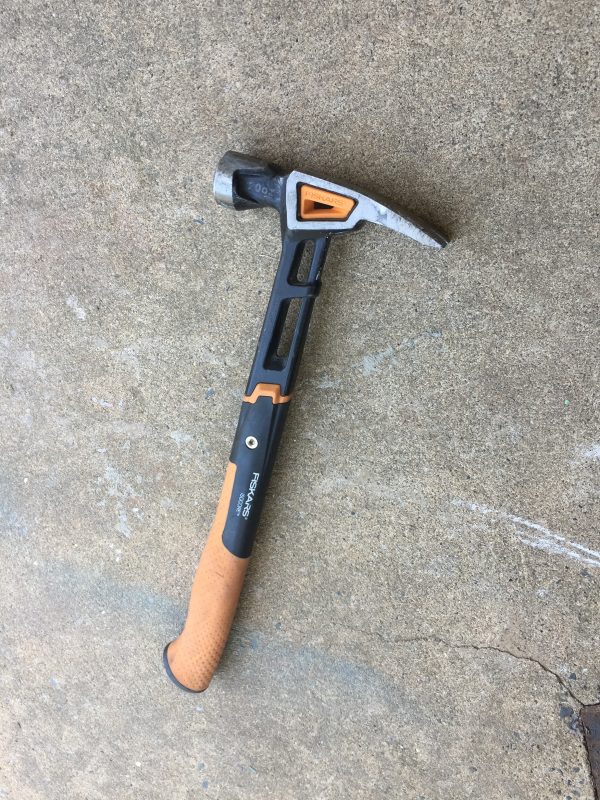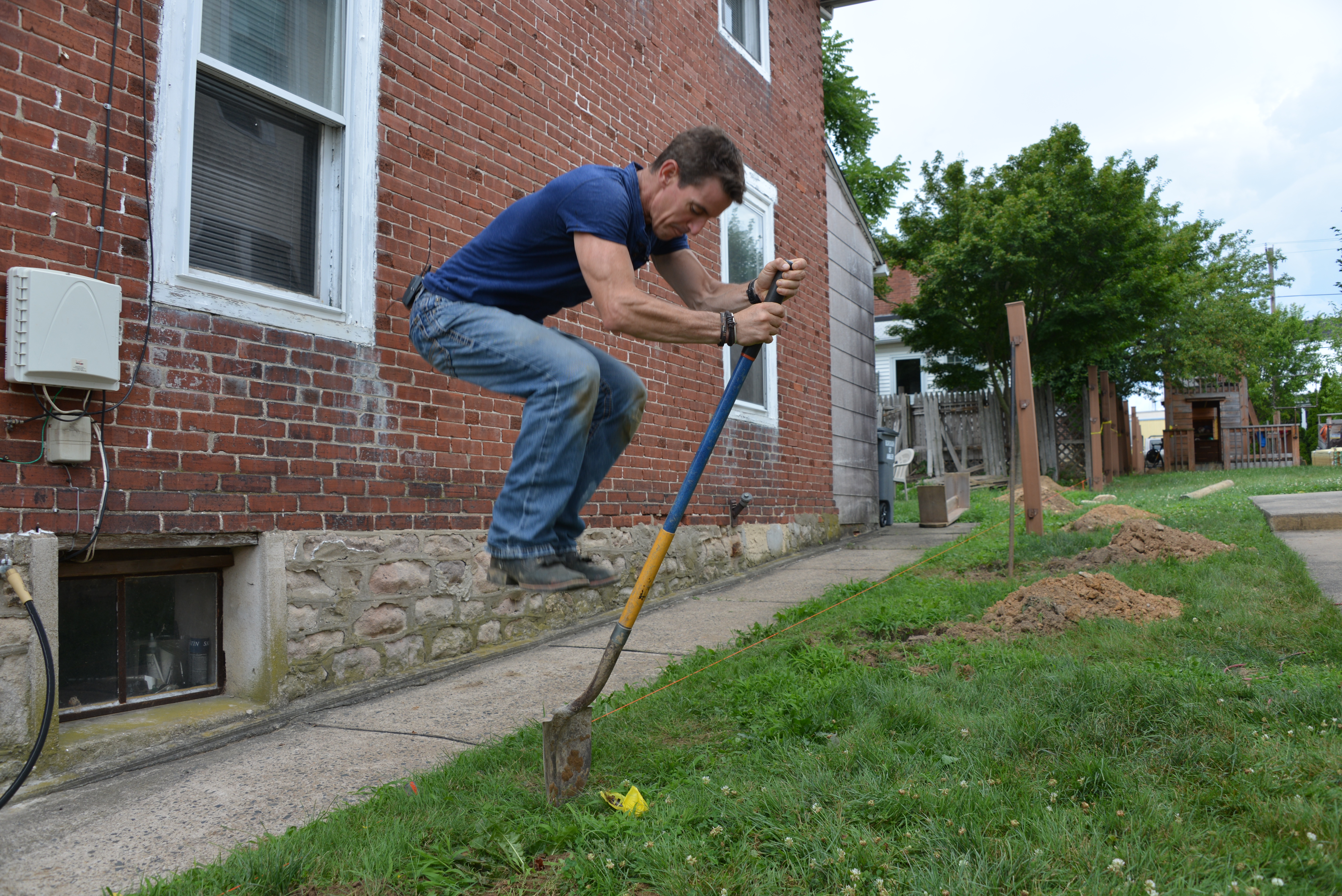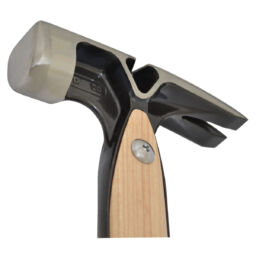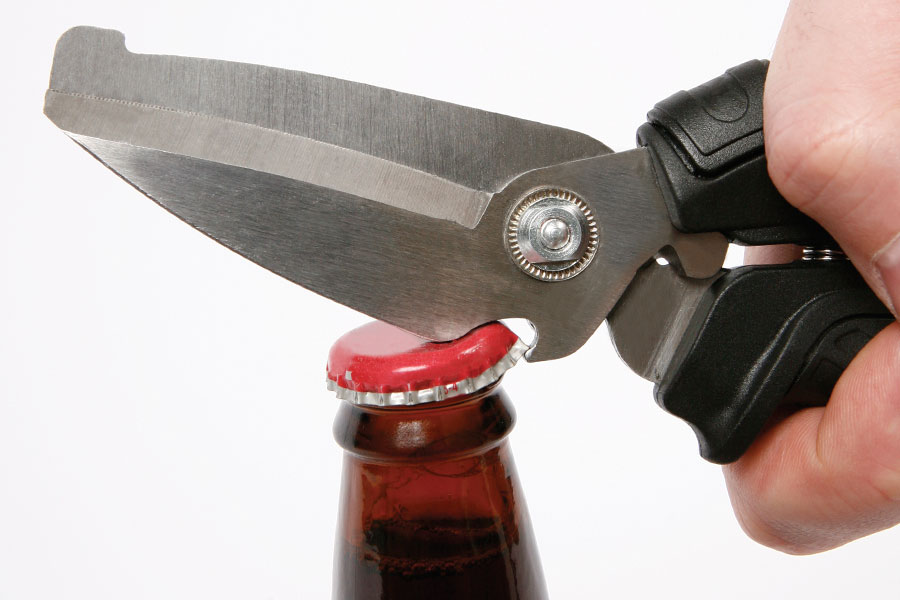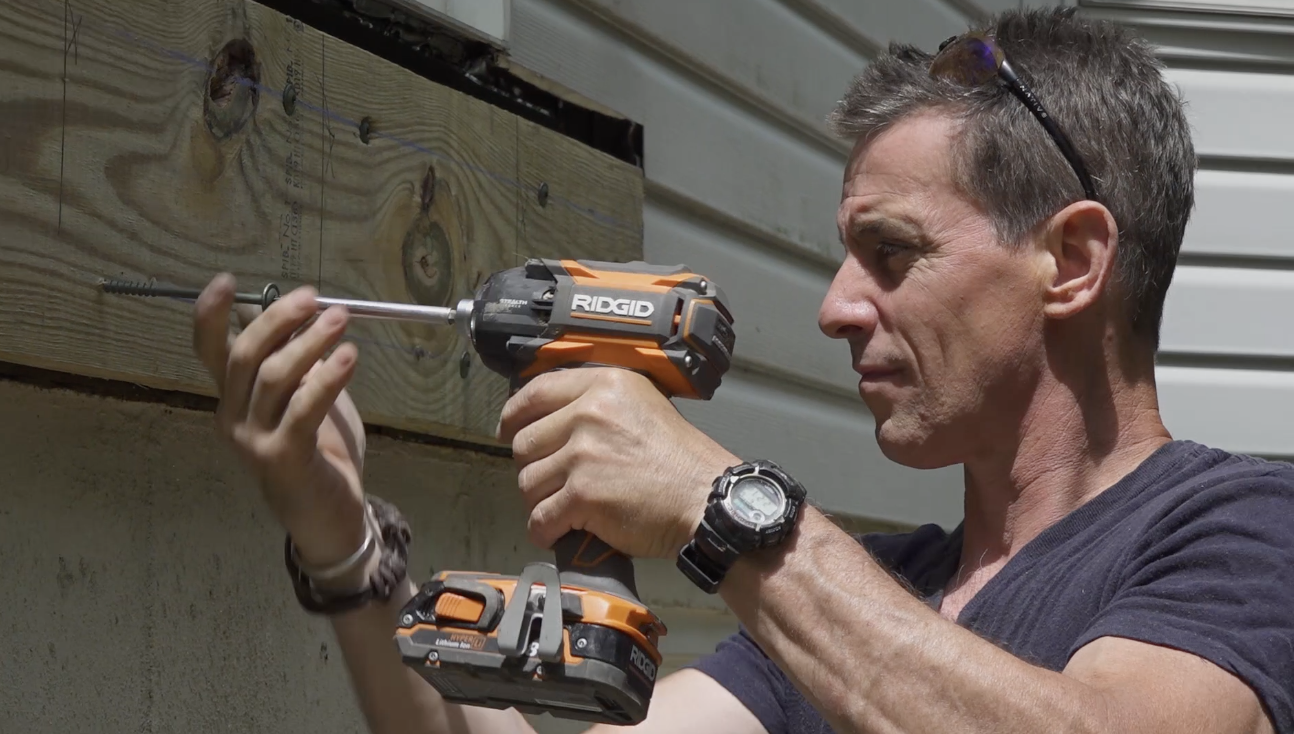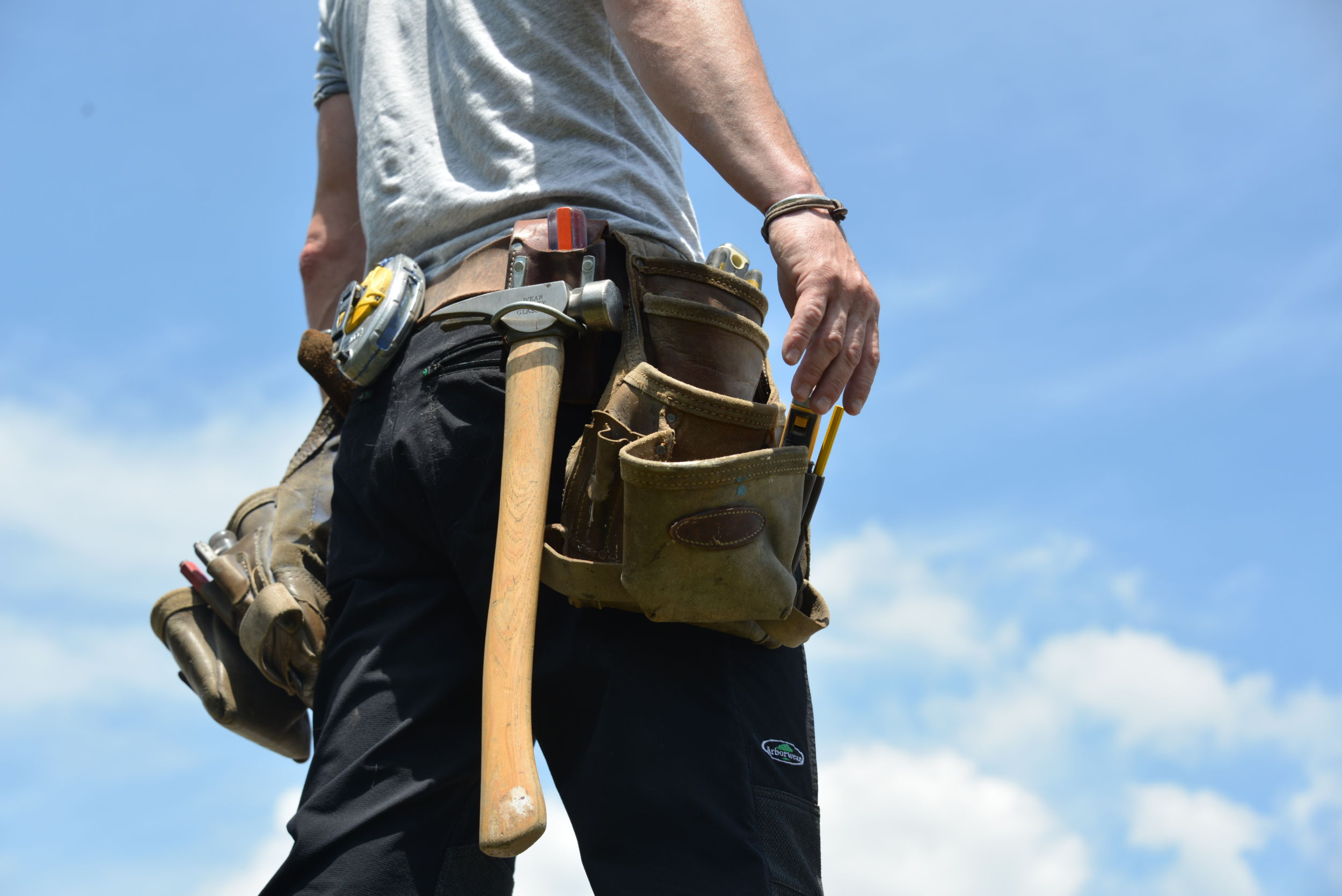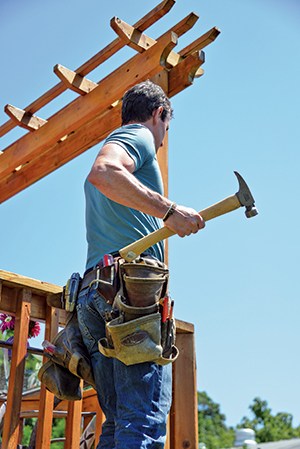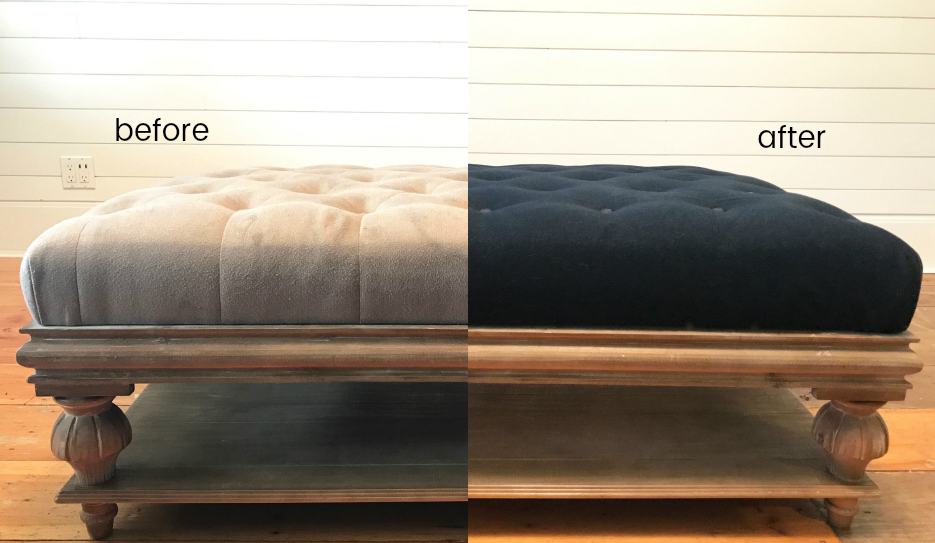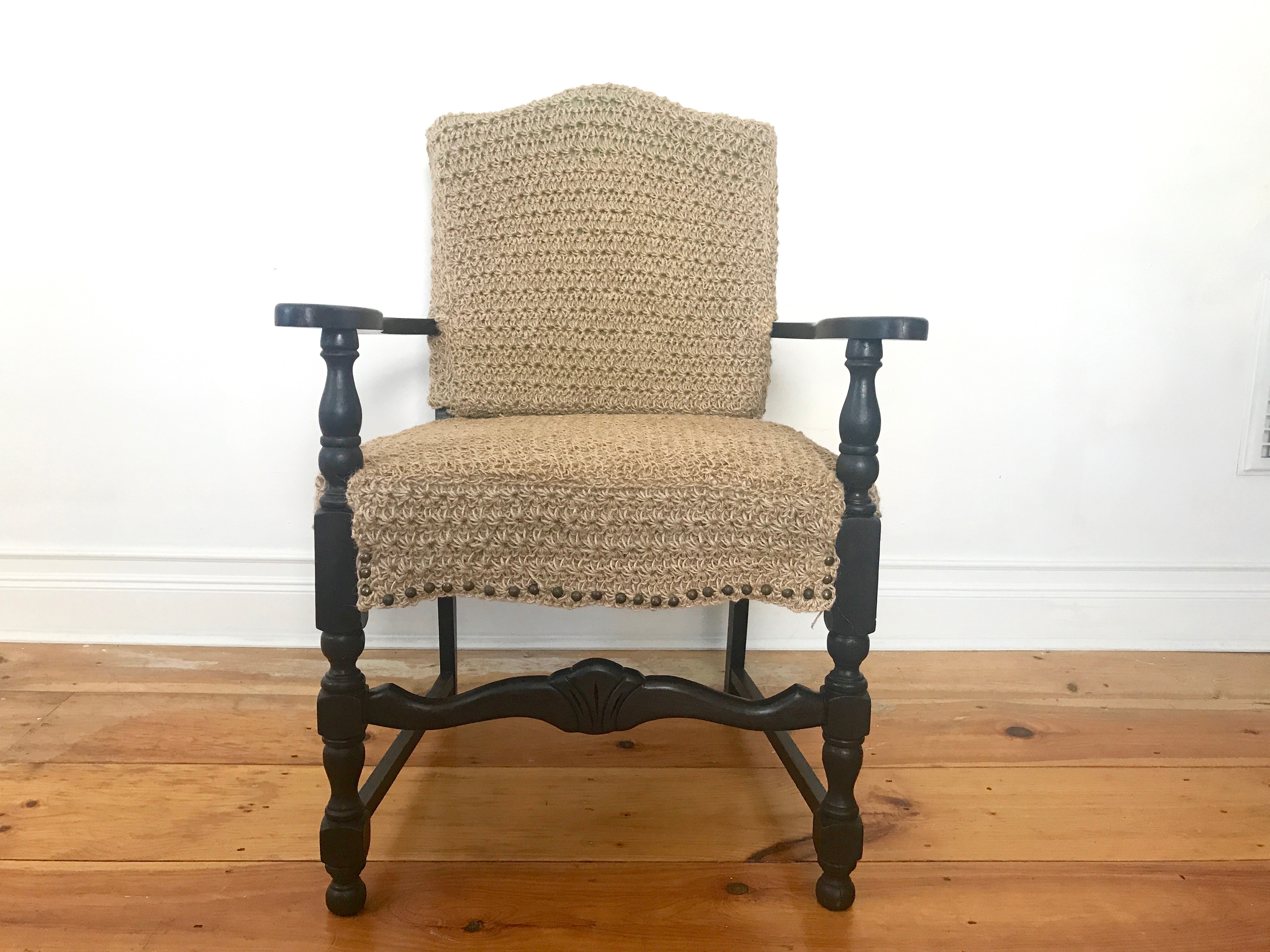In this Fiskars hammer review I’m taking a look at Fiskars 20-ounce IsoCore carpenter’s hammer. It rocks pro features with a DIY price.
When I first started in the trades (Abraham Lincoln and I worked together for a short period of time before he taught himself the entire law and went on to lead a nation, and I didn’t) hammers were about striking power and durability. They were heavy and it took some ‘umph’ to swing them.
Pneumatics (air nailers) changed a hammer’s role. Impact drivers and screws too. To speak of, there are approximately zero carpenters who hand-drive nails any more so I was a little surprised–pleasantly–when Fiskars introduced this line of hammers. Here and there, from time to time, sure we whack a few. But for the most part, zilch.
Yet, we all carry hammers. I mainly use a hammer as a lever, a pry bar, a breaker—essentially it has transformed itself from a putter-in-of things to a taker-out of things.
So while striking power and comfort in the hand matter to me, the first thing I look for in a whammer-slammer is the curvature–called ‘fetch’ to the hyper dweebs among us—of the claw. Essentially, I want it to be almost straight. So here’s the Fiskars hammer review.
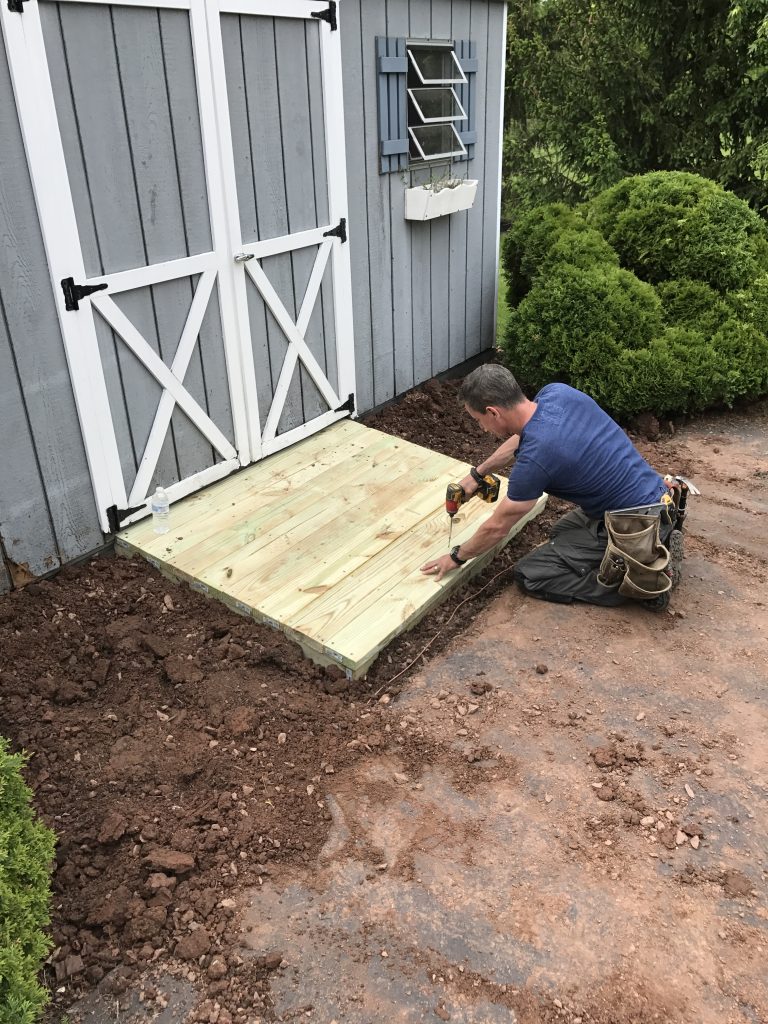
The claw
I’ll use the claw to get in behind things like trim I’m removing. A claw with too much fetch can’t get in there. I’ll use it as a lever, say to hold up a door I’m installing or to brace a sheet of drywall or plywood I’m applying to a wall. The fetch on the Fiskars multi-directional impact device is near geometric perfection.
Hammer weight
Next thing I look at is weight. Because this tool rides in a tool pouch most of the day, it can’t be a boat anchor. This tool settles in at 20-ground-pounding ounces which is just right.
Breakability
Breakability matters hugely in the modern hammer. As a taker-out-of-things—misfired gun-nails framing a wall (basement wall framing video here) or building a deck are hard to take out. I’ve broken—as have many carpenters I’ve met—hickory handled hammers pulling nails.
The Fiskars IsoCore is built with an all-steel shank and sweet overmolded rubber grip—it is actually comfortable to use. Result: Virtually unbreakable to the point of near permanence.
And for when you do have to smash stuff—chisels, nails, that thing that won’t move—it comes down hard like the hammers of old.
Here is the bottom line of this hammer review
This tool would be well-used on a pro jobsite, primarily remodeling in my opinion. And if you’re building shed ramps or working on your deck or doing other DIY home improvement, the Fiskars hammer will get the job done, not cost you an arm and a leg, and deliver all the pro-friendly attributes it is designed with to do your projects.
